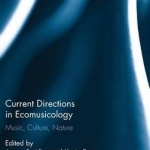Current Directions in Ecomusicology: Music, Culture, Nature
BookThis item doesn’t have any media yet
2015 | Essays
This volume is the first sustained examination of the complex perspectives that comprise ecomusicology-the study of the intersections of music/sound, culture/society, and nature/environment. Twenty-two authors provide a range of theoretical, methodological, and empirical chapters representing disciplines such as anthropology, biology, ecology, environmental studies, ethnomusicology, history, literature, musicology, performance studies, and psychology. They bring their specialized training to bear on interdisciplinary topics, both individually and in collaboration. Emerging from the whole is a view of ecomusicology as a field, a place where many disciplines come together. The topics addressed in this volume-contemporary composers and traditional musics, acoustic ecology and politicized soundscapes, material sustainability and environmental crisis, familiar and unfamiliar sounds, local places and global warming, birds and mice, hearing and listening, biomusic and soundscape ecology, and more-engage with conversations in the various realms of music study as well as in environmental studies and cultural studies.
As with any healthy ecosystem, the field of ecomusicology is dynamic, but this edited collection provides a snapshot of it in a formative period. Each chapter is short, designed to be accessible to the nonspecialist, and includes extensive bibliographies; some chapters also provide further materials on a companion website: http://www.ecomusicology.info/. An introduction and interspersed editorial summaries help guide readers through four current directions-ecological, fieldwork, critical, and textual-in the field of ecomusicology.
Related Items:
| Published by | Taylor & Francis Ltd |
| Edition | Unknown |
| ISBN | 9781138804586 |
| Language | N/A |
Images And Data Courtesy Of: Taylor & Francis Ltd.
This content (including text, images, videos and other media) is published and used in accordance
with Fair Use.
